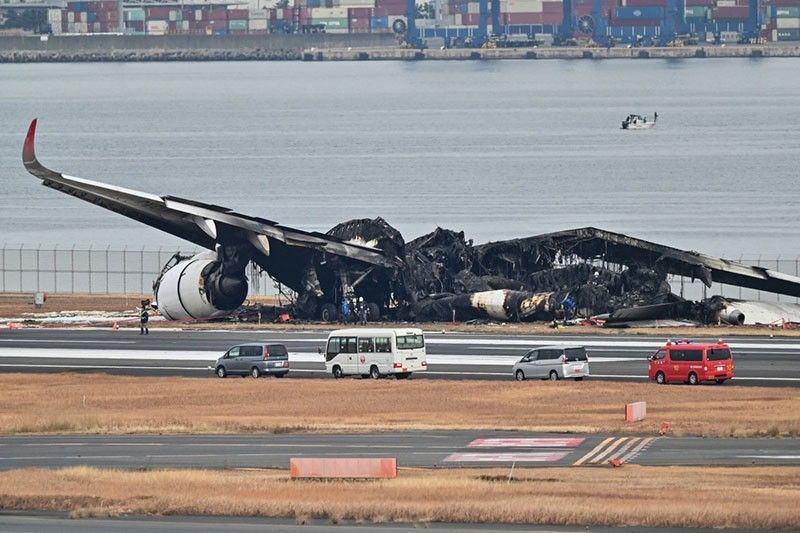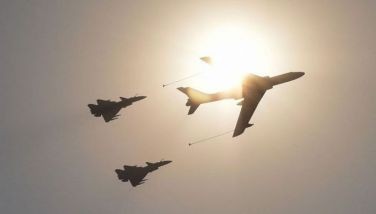Japan plane collision: What we know

TOKYO, Japan — Five people on a coast guard plane died after it was hit by a Japan Airlines Airbus A350 coming in to land, but all 379 people on the airliner were evacuated.
Here follows a rundown of what is known after the collision on January 2 at Tokyo's Haneda Airport, which ended with both planes engulfed in flames.
Sequence of events
According to a communications transcript released by the Japanese government, Japan Airlines flight JAL-516 arriving from Hokkaido was cleared at 5:44:56 pm by air traffic control to land on runway 34R.
On the tarmac, coast guard flight JA722A was instructed 15 seconds later to "taxi to holding point C5", located at least 50 metres (164 feet) from the edge of the runway.
The pilot of JA722A acknowledged the order immediately afterwards.
Roughly two minutes later, the Japan Airlines flight landed and hit the coast guard's DHC-8 aircraft, suggesting that the latter had proceeded onto the actual runway.
JA722A captain Genki Miyamoto, its only survivor, said immediately after the accident that he had permission to take off, broadcaster NHK reported.
The JAL flight crew had no "visual contact" of the other plane, although one of them spotted "an object" just before impact, an airline spokesman told AFP on Thursday.
Black box
Investigators were yet to draw conclusions publicly.
The flight recorder and voice recorder from the coast guard plane have been found, as has the flight recorder from the passenger jet -- but not its voice recorder.
"(We) must wait for the thorough accident investigation to be concluded in order to know exactly what happened," aviation expert Guido Carim Junior from Griffith University told AFP.
"In general, accidents like this one are always the result of multiple factors that influence each other and cannot be reduced to either human error or technology malfunction," he said.
Ball of fire
An orange ball of fire and black smoke erupted underneath the JAL airliner as it sped down the runway. The coast guard plane is difficult to make out in video footage of the incident.
Footage shot by passengers showed flames underneath the plane and smoke filling the cabin as babies cried and people shouted for the doors to be opened.
The nine flight attendants on board needed permission to open the emergency exits, and their chief informed the cockpit of the fire to get that authorisation, NHK reported.
Exit
International rules state that aircraft should be able to be fully evacuated in 90 seconds, using half of the emergency exits.
In this case, there were eight emergency exits but only three -- two at the front and one at the rear left -- could be used because of the fire.
Because the intercom system was no longer functioning, the cockpit could not give permission for the rear exit to be used, the airline said.
The crew in the back deemed it was urgent for the passengers to disembark from the back door and opened it anyway, as they are trained to do.
Last man out
Using megaphones and their unaided voices, the 12-strong crew directed all 367 passengers, getting them off the plane on emergency slides.
It took 18 minutes to evacuate the entire plane, with the pilot the last person to set foot on the tarmac at 6:05 pm.
Only two people sustained injuries.
Soon afterwards, the entire aircraft was an inferno and dozens of fire engines were trying to put out the blaze. That process ended up taking eight hours.
Left behind
Experts said it was remarkable that the passengers appeared to have left their belongings behind on the plane, including at least one pet dog and one cat.
"Passengers seemed to have followed instructions in a textbook manner," Terence Fan, an airline industry expert from Singapore Management University told AFP.
"This is exactly what evacuation policies are designed for -- the airframe itself is not meant to survive the blaze, ultimately."
- Latest
- Trending





























